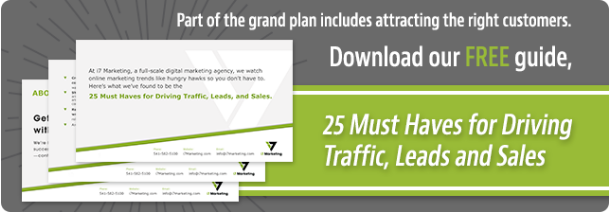B2B eCommerce continues to grow strongly. If you are a supplier of products or services to other organizations, there is good news according to a study on B2B procurement by Acuity Group in May, 2013.
The study results show:
- 40% of corporate buyers spend at least half of their procurement budget online, yet many suppliers do not have the capabilities to match the demand.
- 57% of corporate buyers bought goods online
- 37% of corporate buyers expect to increase online spending in the next year
- 27% of companies make a purchase of $5,000 or more online once per month, whereas 22% make a purchase of $5,000 or more 11 times or more each month.
In addition to these impressive numbers, there is also a glaring opportunity for your company. You see, the study also reveals that about half of business buyers with annual budgets of $500 million or more are comfortable spending at least 90% of their funds online. However, only 13% of business buyers with this budget purchase goods online from suppliers. The reason is most suppliers don’t have an eCommerce site that makes it easy for buyers to find and purchase goods.
The study reveals that buyers want:
- more compelling content
- research tools
- fully functional eCommerce capabilities like popular consumer brands such as Amazon have, which make it easy to search and browse for goods
- increased security
- free delivery
- customer service representatives to talk with by phone and through chat
- fast delivery of shipments
- mobile-optimized site
Don’t miss out on the opportunity to sell your products and services online. Make eCommerce a priority for your B2B business or you risk losing customers. Here’s how:
Build Your eCommerce Site
There are three aspects to building a functional eCommerce site that will appeal to business buyers. These include a search function, compelling content and fast and easy check outs.
Search Function
Make it easy for your website visitors to buy products from your company. You can do this by making your product catalog accessible from every page of your website. You can go one step further by breaking down your product categories into sub-categories. As your visitor hovers over a category a list of subcategories can appear. Then show them the list of products you sell when they hover over a subcategory.
Don’t stop with just adding hovering features. You can also improve search by adding a filter system to a search box. Add filters for product attributes, such as function, size, color, price, etc. Give your customers options that they can choose from to meet their needs. You can find out what they look for through a survey.
One other way to enhance the likeability of your website is to customize or personalize the search function for each visitor. Include a welcome window with your visitor’s logo and a short message each time they return. Once you capture their contact information then record their behavior. The next time they come to your site you can remind them of where they were and what their previous orders were. Make it easy for them to click to reorder for a fast check out.
Compelling Content
Too many eCommerce sites show an image of the product and list the price. Some sites may include a brief description of the product, but that’s it. Yet, that’s not enough to compel a visitor to buy the product from you, not unless that visitor is ready to buy that product after seeing compelling content elsewhere.
This is why you should take no chances. Assume each visitor sees your product for the first time. Make it so compelling they must get it right then and there. So how do you do it?
Provide content that shows visitors how your products can solve their problems. This one improvement on your eCommerce site can lead to increased sales. Start with your best-selling products and higher ticket items.
The first way to make your product compelling is for it to be persuasive. Add content that has an image and a strong headline. Reveal problems your product can solve. Highlight features and discuss benefits. Add testimonials. Video testimonials from reputable companies can also help you improve sales. Don’t forget to ask for the sale by offering a link to your shopping cart.
The more content you have, the more sales you can make. As a rule of thumb, the higher the selling price, the more information about the product you need to share. Just make it persuasive.
Fast & Easy Check Out
Purchase managers have busy schedules, so make it fast and easy for them to check out when purchasing your product. Develop a shopping cart where all of the items they’ve selected can appear on one page with the prices, taxes and total charges. If possible, you should pay for shipping, especially if you want repeat customers. If your system can recall the customer, then the shopping cart can contain the full contact and billing information so the buyer can approve the purchase and leave.
Create a Persuasive Landing Page for Each Product
Relying on your prospects and customers to purchase products from within your online catalog is not enough. You also need landing pages that aggressively and persuasively sell a particular product. In fact, you should have a unique landing page for all of your products.
Think of the landing page as a long direct mail letter or video sales letter that has one purpose: to close the sale. The letter should contain a headline, lead, testimonials, guarantee, compelling offer and call to action with a link to your shopping cart. The landing page should also contain your logo and unique value proposition. To make your letter stand out, you should also have a simple and clean layout.
Generate Leads
To maximize your B2B sales, you need qualified leads. There are many ways to generate leads for a B2B business. Two good ways to attract leads include email marketing and content marketing. These methods are online, so your lead could link directly to your landing page or catalog.
Email Marketing
There are two ways to generate leads from email marketing. The first is to rent a list of contacts of companies that fit your target market. Send a persuasive email to these leads with a link to your product landing page. The second method is to capture the email addresses from visitors to your website. Then follow up with a series of email auto-responders that persuade your prospect to link to your landing page.
Content Marketing
There are numerous types of content marketing. To generate leads quickly, it’s best to provide the type of content that will motivate your target market to respond. That’s why using case studies and social media is a good way to get leads.
Publishing case studies of customers and your products is a viable content marketing strategy to generate leads in a B2B market. Case studies get to the heart of the problem many of your leads may have. They show your prospect that you have a solution for them. Publish as many case studies online as you can. The search engines will pick up on them and increase the number of visitors who visit your website and landing pages.
Social media, such a LinkedIn, Twitter and Facebook, are great avenues to create a buzz about your products. Your customers can share experiences and spread it to their contacts. The great thing about social media is the speed at which it can communicate your message to a huge audience. More companies today use social media for lead generation. And so should you.
What’s Next?
B2B eCommerce is here to stay. Although it will continue its robust sales growth, your window of opportunity, however, is narrowing. That’s because your prospective customers are choosing who they would like to buy their supplies from online. If you build an eCommerce site to fit their needs, you’ll likely increase your business.
On the other hand, if you wait any further, your prospects and established customers may leave you for a competitor with a functional eCommerce site that’s fast and easy from which to purchase goods. So start today.




Submit a Comment
Your email address will not be published. Required fields are marked *